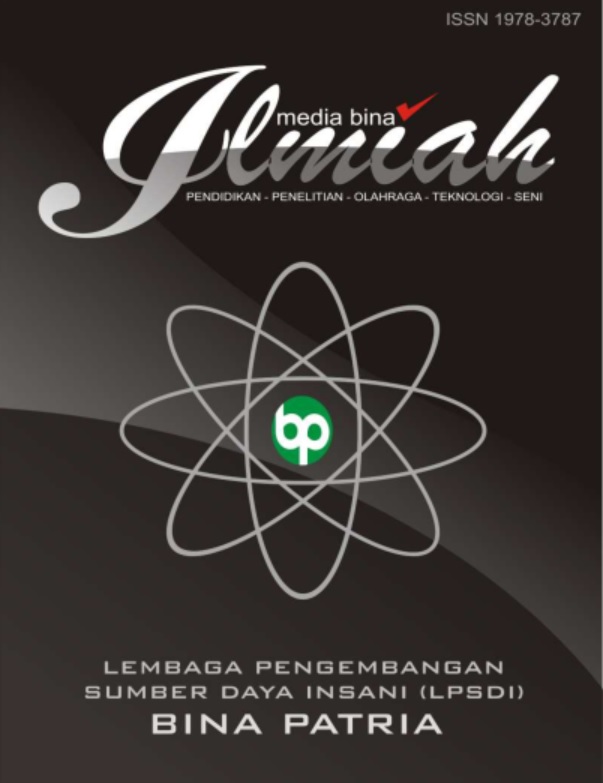POTRET SELF-DISCLOSURE PADA DEWASA AWAL PENGGUNA SECOND ACCOUNT INSTAGRAM
Keywords:
Self Disclosure, Second Account Instagram, Self-Presentation, Emotional Release, Reducing LonelinessAbstract
Social media is the most popular among people especially in early adulthood and the increasing number of second account Instagram users do self-disclosure on their accounts because they have freedom in it without being judged by others. The lives of the three participants on their second Instagram accounts were explored qualitatively. Furthermore, the data from the participants were processed by transcendental phenomenology. The three participants are 18-year-old early adults who have and are active on second Instagram accounts. The findings in this study are that there are three themes that emerge in expressing themselves on their second account, namely in revealing their inner presentation to others, and reducing loneliness and for emotional release. The researcher hopes that in the future, early adult Instagram second account users will be more open and establish friendships that have closer trust in each other.
References
Altman, I., & Taylor, D. A. (1973). Social penetration: The development of interpersonal relationships. Irvington Publishers.
Ariana, R. (2016). Laporan khusus digital.
Budiani, A. N., Fauzi, F., Bantar, G. Y., & Vioga, M. (2023). Gambaran self disclosure pengguna second account instagram ( Studi fenomenologi self disclosure pengguna second account instagram pada dewasa awal ). Jurnal Pendidikan Tambusai, 7(2), 17238–17243.
Boyd, D. M., & Ellison, N. B. (2007). Social network sites: definition, history, and scholarship. Journal of Computer-Mediated Communication, 13(1), 210–230. https://doi.org/10.1111/j.1083-6101.2007.00393.x
Brogan, C. (2010). Social Media 101. Wiley.
Creswell, J. W. (2009). Research design : qualitative, quantitative, and mixed methods approaches (4th ed). Sage Publication.
Creswell, John W. (2015). Penelitian kualitatif & desain riset: Memilih diantara lima pendekatan (edisi 3, cetakan 1).
Indonesia: Pustaka Pelajar. Dewanti, K. E., Yuliadi, I., & Karyanta, N. A. (2015). Psychological Well-Being pada gay yang menjalani proses coming out. Jurnal Ilmiah Psikologi Candrajiwa, 4(3), 163-176.
Devito. (2011). Human communication book. The basic course. Pearson education (9th ed.).
Dewi, R., & Janitra, P. A. (2018). Dramaturgi dalam media sosial: second account di instagram sebagai alter ego. Jurnal Ilmu Komunikasi, 8(3), 340–347.
Fauzia, A. Z., Maslihah, S., & Ihsan, H. (2019). Pengaruh tipe kepribadian terhadap self-disclosure pada dewasa awal pengguna media sosial instagram di kota Bandung. Pengaruh Tipe Kepribadian Terhadap Self-Disclosure Pada Dewasa Awal Pengguna Media Sosial Instagram Di Kota Bandung, 3(3), 151–160.
Goffman, E. (1959). The presentation of self in everyday life. Anchor Books, Doubleday.
Goodstats. (2023). Pengguna instagram berdasarkan usia 2023. Goodstats. https://data.goodstats.id/statistic/agneszefanyayonatan/pengguna-instagram-berdasarkan%02rentang-usia-2023-MEdzz
Hurlock, Elizabeth B. (1980). Psikologi Perkembangan: Suatu Pendekatan sepanjang Rentang Kehidupan. Erlangga.
Hurlock, Elizabeth B. (2003). Psikologi Perkembangan: Suatu Pendekatan sepanjang Rentang Kehidupan. Erlangga.
Jati, P. P., & Mardi Rahayu, M. N. (2023). Intimate friendship and self disclosure on early adult instagram second account users. Psikoborneo: Jurnal Ilmiah Psikologi, 11(3), 436. https://doi.org/10.30872/psikoborneo.v11i3.11302
Kang, J., & Wei, L. (2020). Let me be at my funniest: instagram users’ motivations for using Finsta (a.k.a., fake instagram). Social Science Journal, 57(1), 58–71. https://doi.org/10.1016/j.soscij.2018.12.005
Kartini. (2022). Penelitian tentang instagram. Iqra’, 2275(Penelitian Kepustakaan), 36–39.
Kerpen, D. (2011). Likeable social media how to delight your customers, create an irresistible brand, and be generally amazing on Facebook (and other social networks). McGraw-Hill.
Leung, L. (2002). Loneliness, self-disclosure, and ICQ (“I seek you”) use. Cyberpsychology and Behavior, 5(3), 241–251. https://doi.org/10.1089/109493102760147240
McGregor, K. A., & Li, J. (2019). Fake instagrams for real conversation: A thematic analysis of the hidden social media life of teenagers. Journal of Adolescent Health, 64(2), S39–S40. https://doi.org/10.1016/j.jadohealth.2018.10.088
Moleong, L. J. (2013). Metodologi penelitian kualitatif (Revisi). PT Remaja Rosdakarya.
Mulyana, D. (2010). Metodologi Penelitian Kualitatif paradigma Baru Ilmu komunikasi Dan Ilmu sosial lainnya deddy mulyana. PT Remaja Rosdakarya.
Nabila, A. P., & Sembada, W. Y. (2022). Pengaruh keterbukaan diri relawan dan siswa terhadap kepercayaan interpersonal motivasi di yayasan swara peduli. Jurnal Komunikasi Nusantara, 4(2), 186–193. https://doi.org/10.33366/jkn.v4i2.133
Pamungkas, I. R., & Lailiyah, N. (2019). Presentasi diri pemilik dua akun instagram di akun utama dan akun alter. Interaksi Online, 7(4), 371–376. https://ejournal3.undip.ac.id/index.php/interaksi-online/article/view/24960
Poerwandari, E. K. (2007). Pendekatan Kualitatif untuk penelitian perilaku manusia. LPSP3 Fakultas Psikologi Universitas Indonesia.
Prastowo, Andi. (2011). Memahami metode-metode penelitian. Ar-Ruzz Media
Prihantoro, E., Damintana, K. P. I., & Ohorella, N. R. (2020). Self disclosure generasi milenial melalui second account instagram Edy Prihantoro 1 , Karin Paula Iasha Damintana 2 , Noviawan Rasyid Ohorella 3. Ilmu Komunikasi, 18(3), 312–323.
Ratnasari, R., Hayati, E. N., & Bashori, K. (2021). Self disclosure media sosial pada fase kehidupan dewasa awal. Jurnal Diversita, 7(2), 141–147. https://doi.org/10.31289/diversita.v7i2.4511
Sugiyono. (2015). Metode penelitian pendidikan : Pendekatan kuantitatif, kualitatif, dan R&D / Sugiyono (21st ed.). Alfabeta.
Sugiyono. (2019a). Metode Penelitian Kuantitatif Kualitatif Dan R&D. Alfabeta.
Sulianta, F. (2015). Keajaiban sosial media. Elex media komputindo.
Swastika, N., Krisdinanto, N., & Fista, B. R. S. (2021). Pengungkapan seksualitas diri pada media sosial instagram @Sisilism. Scriptura, 11(2), 53–64. https://doi.org/10.9744/scriptura.11.2.53-64
Utari, D. M. P. (2016). Pengelolaan privasi informasi dalam akun kedua instagram dikalangan mahasiswa. 1–23.
Wheeless, L. R., Nesser, K., & Mccroskey, J. C. (1986). The relationships of self-disclosure and disclosiveness to high and low communication apprehension. Communication Research Reports, 3, 129–134. http://www.jamescmccroskey.com/publications/137.pdf
Downloads
Published
Issue
Section
License
Copyright (c) 2025 Elizabeth Aprilia Caroline Ice

This work is licensed under a Creative Commons Attribution 4.0 International License.
















